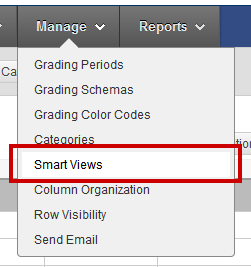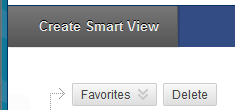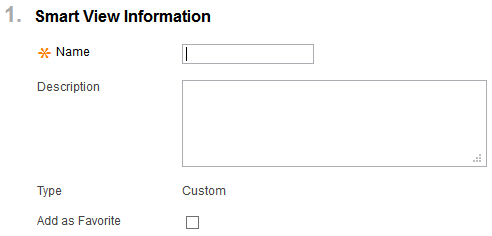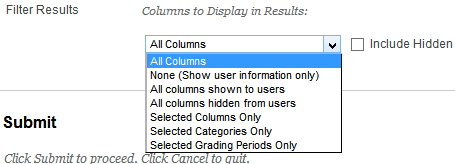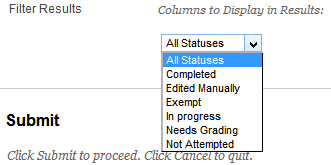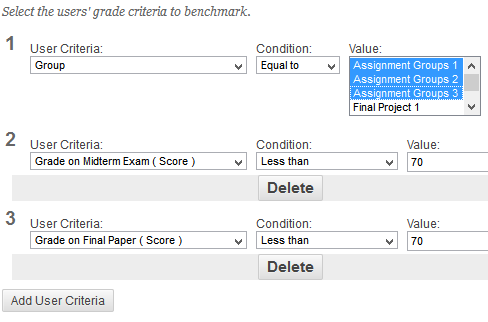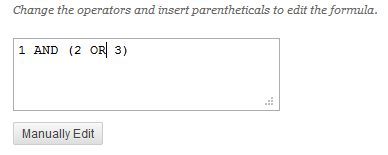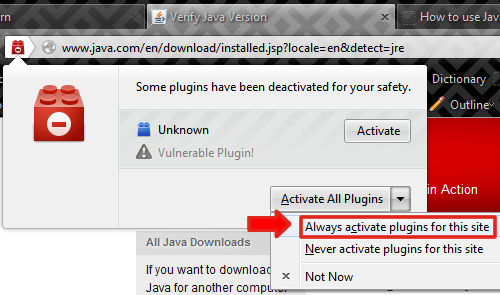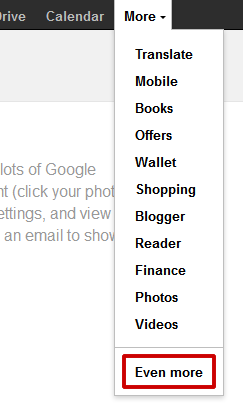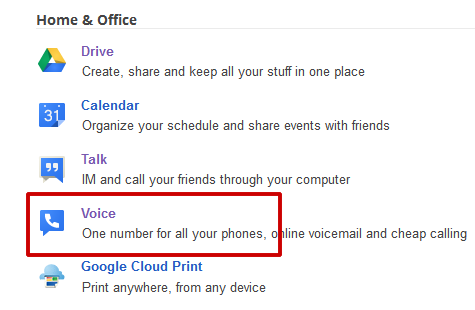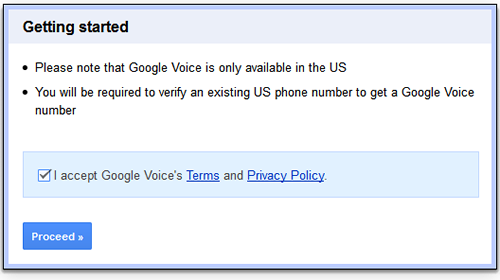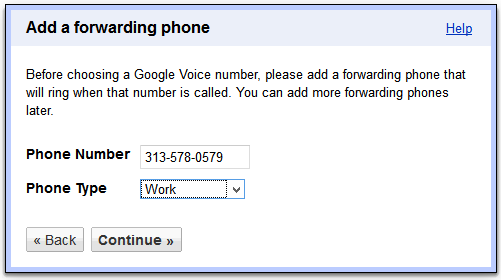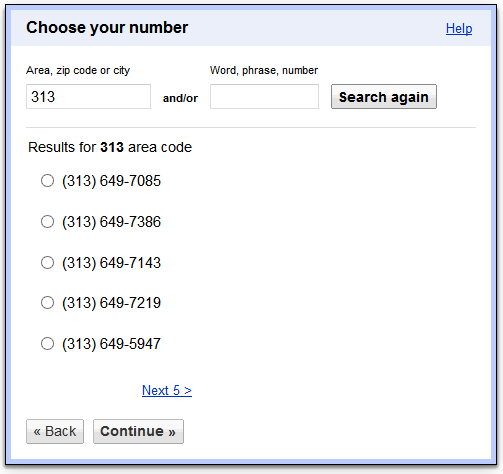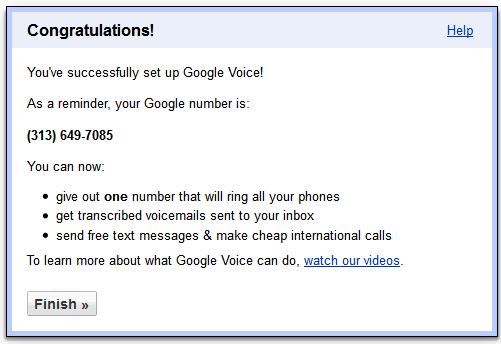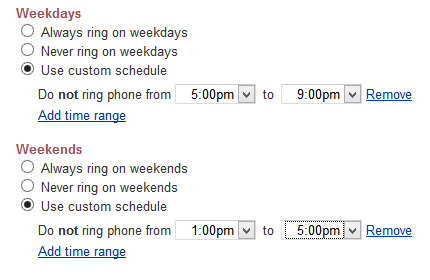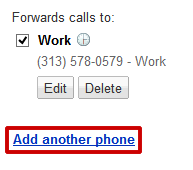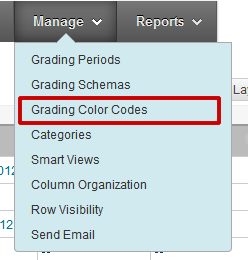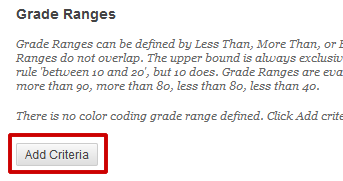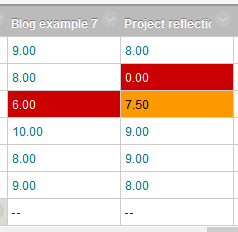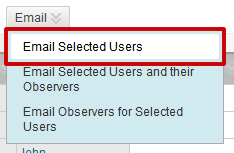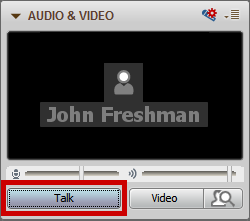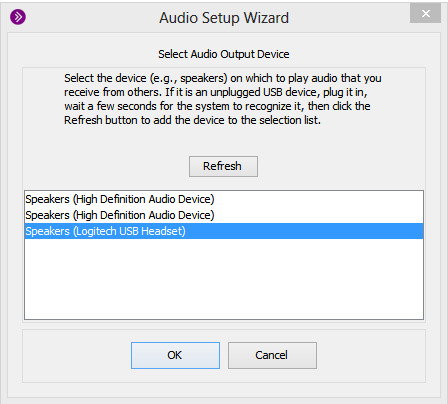Smart views in the Grade Center
Smart Views let you see only specific sets of Grade Center columns and rows based on criteria you provide. Using Smart Views, you can see only students who scored poorly on an exam or homework assignment, only columns with a specific category, and so on. The tools available for dynamically selecting the columns and rows that are displayed are pretty powerful. They’re not difficult to set up either.
You may have noticed the headings ASSIGNMENTS and TESTS that appear under the FULL GRADE CENTER link when you open the GRADE CENTER heading on one of your courses.
These are shortcuts to a couple Smart Views available in your course site by default. A Grade Center Smart View is essentially a filtering mechanism: it displays only the Grade Center columns that share a set of attributes. The simplest smart view is based on a column’s category (all columns with the ASSIGNMENTS category are displayed when you click Assignments), but we can also set up a smart views based on other attributes. We could, for example, set up a Smart View showing us all (and only) Assignments that need grading. Best of all, smart views aren’t limited to columns. You can use smart views to view only particular students or groups of students, which can be particularly handy if you’re running a MERGED course site — you can drop the students from each section into a group, then used group-based smart views to look at only one section’s students at a time.
To create a smart view, load up your course’s Grade Center, point to MANAGE, then click SMART VIEWS.
The Smart Views page lists all the default views for your course (along with any you may have created yourself. You’ll notice you have the option to FAVORITE one or more views. Smart Views that are marked as FAVORITES will appear underneath the FULL GRADE CENTER link in the menu on the left (ASSIGNMENTS and TESTS are both default favorites). To favorite or un-favorite a view, click the star to the right of the view’s name.
To create a new Smart View, click the CREATE SMART VIEW button at the top of the page.
The first section of the CREATE SMART VIEW page is fairly self-explanatory. Enter a name for your Smart View, provide a description if you’d like, check the ADD AS FAVORITE box if you’d like the view to appear as part of the GRADE CENTER menu on the left.
It’s under part two, SELECTION CRITERIA, that things get interesting. Depending on whether you have groups active in your course you’ll see four or five selection criteria. Let’s look at each separately, in order.
Course Group
If you’ve set up groups for your course, then the first criteria will be Course Group. This will narrow your view to just a group or set of groups. If you’d like, you can further filter your view limiting to a particular category, column, or grading period.
First, select the group or groups you want included in (or excluded from) your new Smart View.
You can select more than one group at a time by holding the CTRL key on your keyboard and clicking through the groups that appear in the list.
By default, the criteria is set to ALL COLUMNS. However, you can narrow the display to to just particular columns, categories, grading periods, or columns either shown two or hidden from users. To include columns you’ve hidden from the Full Grade Center view in your new Smart View, check the INCLUDE HIDDEN INFORMATION box to the right of the column filter pull-down list.
If you’d like to filter by group and status (e.g., “Needs grading”), use the CATEGORY AND STATUS criteria.
Performance
Performance-based smart views show you columns for users who have a score in a particular Grade Center column that is at, above, below, or between a score (or pair of scores) you provide. So let’s say we want to create a Smart View that will only show me students who are not doing well in the course.
In the SELECT CRITERA section, I could choose “GRADE ON WEIGHTED TOTAL” for USER CRITERIA, “Less than” for the CONDITION, and set the VALUE to the number which I want to use as my red flag (say, “80″). So when I use this smart view, I’ll see all the columns for students who have less than an 80% in the weighted total column. If I don’t want to see all the columns, I have access to the same filtering options found in the COURSE GROUP criteria.
User
USER is possibly the most straightforward of all the selection criteria. Use this option to select one or more users (use the CTRL+Click trick to select more than one) whose column information will be displayed in your Smart View. If you don’t want to see all the columns, for these users, you have the same filtering options found in the COURSE GROUP and PERFORMANCE criteria.
Category and Status
This is probably the most useful and most powerful of the Smart View criteria. As the name suggests, the CATEGORY AND STATUS criteria lets you view either all columns or columns set to a particular category. You can also limit the rows that appear in this view to particular users or groups, should you so choose.
 Next, you have the option to select a column status –
Next, you have the option to select a column status –
– meaning you can display only columns that have a grade in them (Completed), or all the columns in a particular category that need to be graded.
Custom
If none of the above meet your needs, you have the option of venturing into the land of custom filtering. Use the pull down lists to select a column, user, or group to select on, and filter as necessary as we’ve seen above (members of Assignment Groups 1-3), then click the ADD CRITERIA button to further narrow what will appear in the display (who have less than 70 points on the midterm), and continue adding criteria as necessary (who also have less than 70 points on the final paper) …
By default, your custom smart column will incorporate all these elements (1 AND 2 AND 3), but you can use the formula editor to insert parentheses and change the relationship between lines from AND to OR …
Applying a Smart View to the Grade Center
So now you’ve created a smart view or two. Outside of the Favorites list, how do we apply a smart view? First, we need to turn on the FILTER menu. So from the Grade Center, click the FILTER button in the upper right …
This will add a filtering menu right beneath this line of buttons. Point to the button to labelled CURRENT VIEW (likely, this will say FULL GRADE CENTER) to access a broad menu of filtering options. Select the Smart View you want to use, and your view will instantly be filtered.
Used judiciously, Smart Views can be an extremely effective way of managing your Grade Center, particularly if you have a large number of students and / or columns. If you have any questions about creating and applying Smart Views, please contact the Instructional Design Studio.

